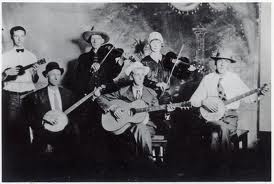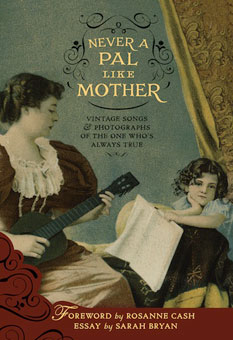edited from Mark Jacobson (www.vulture.com):
Lead Kindly Light, by Sarah Bryan and Peter Honig, is a nifty package consisting of a hundred or so old photographs, many of them found in secondhand stores throughout the Carolinas, and a pair of CDs containing digital remastering of primarily country-fiddle 78s from the 1920s and ’30s.
Harking back to a July 27, 1927 recording session featuring the Blue Ridge Corn Shuckers, Honig imagines a scene in which the group’s leader, Ernest Van Stoneman, tells his fellow pickers that the storied Victor Records producer Ralph Peer believes more money will be made if the Shuckers can come up with a proto–Hee Haw skit to accompany the music. None of the musicians are too crazy about this, but fiddler Eck Dunford suggests everyone can play a bit and then pretend to take a swig of corn liquor.
“Aw hell,” complains Stoneman, “what kind of idiot would enjoy listening to that?”
“Peter Honig will,” Dunford returns. “I just know he will.”
Reached at the home where he lives with Ms. Bryan near Durham, North Carolina, Honig told me, “Ole Eck was right about that. Just can’t get enough of it.” A fiddler himself, Honig, 61 — who grew up in the less piney confines of Westport, Connecticut — takes a good-natured if unsentimental tack on the 46 recordings in Lead Kindly Light.
“There are a lot of fiddle tunes because that’s mostly what I’ve got, and you don’t hear them as much on much of archival reissues the way you do guitar and blues records. I’ve been acquiring this stuff for more than 30 years, but I don’t have a giant collection by most standards. I am not encyclopedic. I have what I like and play them often. I’m not romantic about the past or think that things used to be better than they are now. I just think the music was better. Or I like it better.”
The same publisher-packager, Dust-to-Digital, offers Parchman, a collection of photos and field recordings made at the Mississippi State Penitentiary by the unmatched Alan Lomax during the 1940s and ’50s. Not to slight the magisterial contributions of someone who was the first to record Muddy Waters and got Jelly Roll Morton to recount, self-aggrandizingly, his life and times, but works by Lomax and other professional folklorists often smack of the museum. The template of the maniacal, sweaty-browed collector who will do almost anything to lay his hands on a Maltese-falcon-like 78 was set for all time by the cartoonist R. Crumb, the best known of these backwoods record stalkers. Lead Kindly Light takes a more joyfully relaxed approach to its beloved materials.







